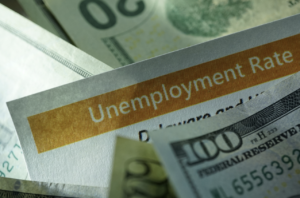Ads
Nvidia (NVDA) made history on Monday by achieving a record close in the stock market. The surge in AI hardware equities has been a driving force behind this achievement, fueled by investor excitement surrounding the growing demand for artificial intelligence technology.
Thanks to an 8% increase in its shares compared to the previous week, Nvidia is inching closer to surpassing Apple (AAPL) as the most valuable company on Wall Street. This significant uptick in the chipmaker’s stock price is directly related to recent statements made by CEO Jensen Huang and Nvidia’s partners, who have emphasized the critical importance of the company’s AI processors.
Nvidia is not the only company benefiting from the current AI boom. Other AI processor and hardware companies, such as Arm (ARM), Qualcomm (QCOM), Broadcom (AVGO), Super Micro Computer (SMCI), Astera Labs (ALAB), and Micron (MU) are also experiencing a surge in their stock prices. TSMC (TSM) reached a record high on Monday as well.
Overall, the PHLX Semiconductor Index (^SOX) has surged by a remarkable 4.5% over the past five days, outperforming the S&P 500 (^GSPC), which saw a more modest 2.9% increase during the same period.
This positive trend in AI chip equities is a promising signal for AI hardware spending, addressing some of the concerns on Wall Street about a potential slowdown in investment in the near future.
Goldman Sachs analysts noted in a report on October 10 that while Phase 2 stocks, which include AI infrastructure-related companies like Arm, TSMC, and SMCI, may seem somewhat pricey compared to historical averages, the increasing demand for AI technology could prompt large-cap tech companies to ramp up their AI-related capital expenditures beyond current expectations.
Major tech players like Google (GOOG), Microsoft (MSFT), Amazon (AMZN), and Meta (META) have all committed to continuing significant investments in AI infrastructure throughout the upcoming year. This ongoing commitment is expected to benefit AI hardware companies like Nvidia, with projections from Goldman Sachs estimating that mega-cap tech companies may allocate between $215 billion and $250 billion to AI capital expenditures in 2024 and 2025, respectively.
The recent $6.6 billion funding round for OpenAI is also anticipated to inject additional capital into AI hardware companies like Nvidia as they continue to develop advanced AI models.
Harlan Sur, an analyst at JPMorgan, expects that the semiconductor industry’s revenues will see a 6% to 8% increase by 2024. In a recent investor communication, he expressed optimism about semiconductor and semiconductor equipment stocks, projecting continued growth due to improved supply and demand dynamics in the latter half of 2024 and 2025.
Despite these positive projections, analysts caution that a decrease in investment is inevitable, raising questions about the timing of such a downturn. Unlike AI software, which is often sold on a subscription basis, AI hardware is typically a one-time purchase. As such, analysts warn that AI chip companies may currently be in a bubble that could deflate with a sharp decline in spending by major tech companies on AI infrastructure.
The recent earnings reports of tech giants have highlighted a growing gap between their significant AI infrastructure investments and the returns on those investments, testing the patience of Wall Street investors. Following quarterly financial reports that revealed hefty AI expenditures, the stocks of Google, Microsoft, and Amazon saw declines in the latter part of the summer.
In an email to Yahoo Finance, D.A. Davidson analyst Gil Luria emphasized that while spending on data center infrastructure is expected to remain robust in the near term, there could be a peak in capital expenditures by hyperscalers as early as the following calendar year. This cautious outlook underscores the uncertain future of AI hardware companies as they navigate the evolving landscape of AI technology and investment trends.






